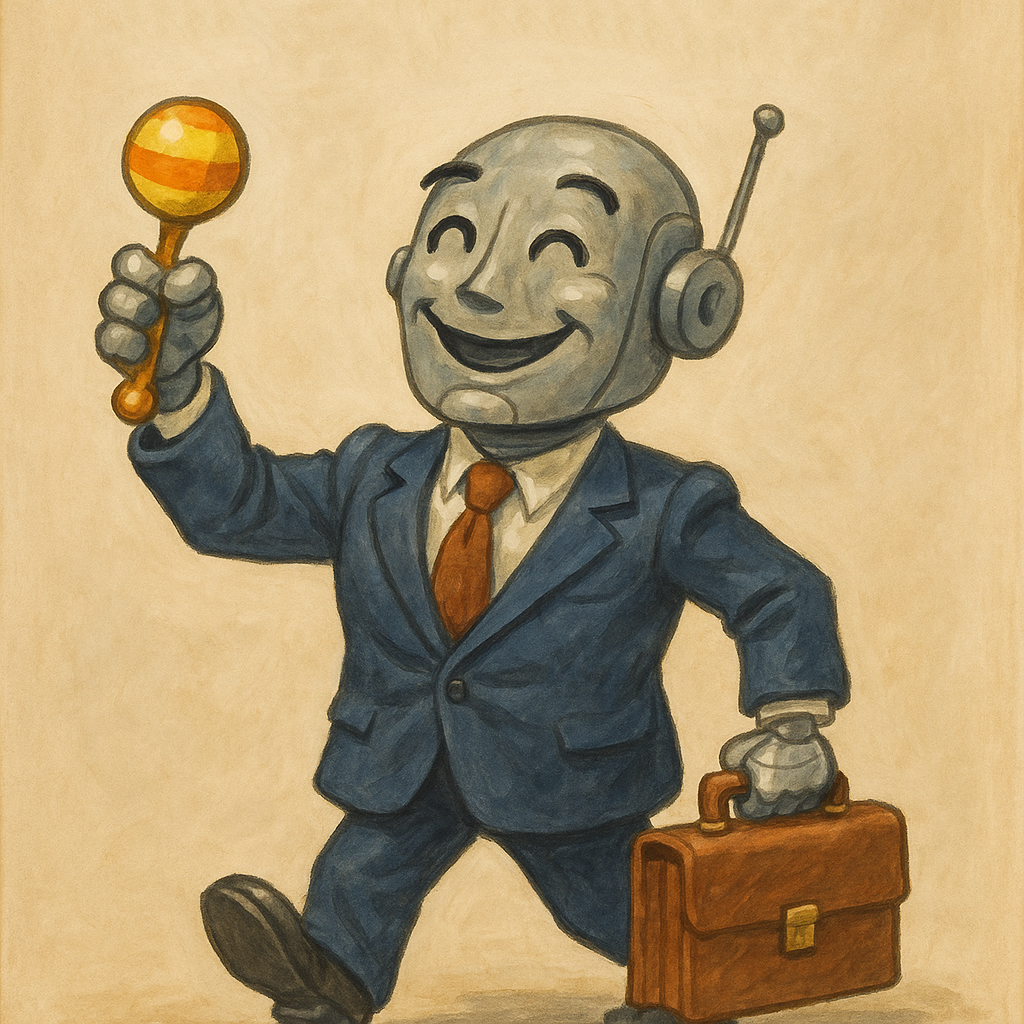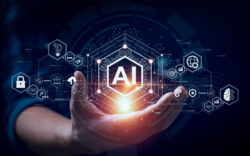
If Baby Boomers defined the post-war years, the young of the UK and Europe today might be better labelled the Baby Busters.
In 2023, just 3.67 million babies were born across the EU, down from more than 5 million in 1990. Fertility sits at 1.38 births per woman, far below the 2.1 needed for replacement. The average age of a first-time mother is nearly 30.
Europe isn’t just slowing. It’s shrinking, fast.
And for the first time since the 1960s, the old are outnumbering the young.
Why does this matter? Because demographics drive economic destiny.
Fewer babies today mean fewer workers tomorrow. A shrinking labour force caps GDP growth, drives shortages in everything from healthcare to manufacturing, and makes pensions harder to fund.
This isn’t a temporary dip either.
Deep cultural shifts, from the cost of living, property prices far outpacing wages growth, the cost of higher education, cost of childcare, urbanisation, and the decision to put career over family are all contributing aspects that make a return to replacement numbers and natural population growth impossible.
Immigration papers over cracks, distorts the figures, but politics across the EU has now turned hostile to immigration anyway, and you can bet that if borders get tightened further, that’s fine and well for managing your immigration problems, but only goes to exacerbate the demographics problem.
And unless you’re going to take on board an inverse of China’s one-child policy, which is highly unlikely, then there’s a big old problem of productivity and economic stagnation that’s a giant spectre for all future governments to have to wrangle with.
This is the UK and Europe’s ticking demographic time bomb.
But there is a solution…
Enter the Robots
If Europe can’t make more people, and won’t import enough workers, what’s left?
There is only one answer, robots.
And yeah, that does kind of mean the sci-fi kind. The humanoid, AI-enabled kind already emerging in labs and factories.
Tesla’s Optimus prototype is the most hyped one out there, but it is far from the only one.
We’ve already seen Optimus walking around Tesla facilities, doing production line jobs, even serving popcorn at the newly launched Tesla Diner in LA.
Elon Musk has even said robot sales could eventually outstrip Tesla’s car sales.
And the thought of it all is an economic productivity dream. Humanoids don’t sleep, don’t tire, follow instruction without protest and can scale far faster than any workforce.
Sure, they will get old, need replacing, but the payback on them is estimated to be as little as two years. And that’s based on a hefty cost of $250,000 per unit. What if that unit cost is $50,000? Or $30,000?
Pay back in months, not years.
Nvidia’s Jensen Huang has gone on record saying humanoid robots are the “next multi-trillion-dollar industry.” When the man selling the chips that power AI that lets the robots think, says robots could dwarf smartphones, investors should listen.
And when other forecasts have as many as 4.1 billion humanoid robots in circulation by 2050, it’s certainly an opportunity I think is too big to ignore.
Remember, even big, world changing technologies still take years to properly roll out and for the impact on stocks and markets to properly unfold.
First, we’ll see it in logistics and warehousing. Robots lifting boxes, sorting packages, running forklifts, at least the ones that aren’t fully autonomous already.
And then manufacturing lines where humanoids can drop into repetitive assembly roles.
Elder care for the ageing (and increasingly childless) population, where there simply won’t be enough caregivers.
Hospitality and retail, where robots can stock shelves or clean hotel rooms overnight and provide human-like assistance.
Even at an airport, no more delayed flights because baggage handlers decided to go on strike. And the idea of being “Dad sherpa” with all the bags, here Optimus carry my bags please.
The key is design and functionality though.
Unlike traditional industrial robots and automation that require retooling entire factories, humanoids are built to operate in human environments. They can use our tools, navigate our spaces, and “slot in” where labour is scarce, or unproductive.
That’s why this isn’t a sideshow that Elon’s forced on the world. It’s a pragmatic response to the Baby Busters problem.
From prototype to payroll to profit
For investors, the investment thesis here is straight forward, demographic decline is a risk, but it’s also the catalyst for a robotics and AI boom.
The simple and more relevant parallels are of the early PC era, or the dawn of the internet.
These are technologies born out of necessity that exploded into the mass market.
I believe humanoid robots will follow the same path. And the winners of this boom could define the next few decades of economic growth and stock market performance.
There are some obvious names to watch, and some not-so-obvious ones too.
- Tesla (NASDAQ:TSLA): Clearly a front-runner here and most likely to get their Optimus to the mass market first. If the price point on these is said to be true around the US$30,000 it’s going to light a fire under Tesla’s stock price, assuming they don’t spin the robot company out of the car company, which if they did, would light a fire under the robot company’s stock price.
- 1X Technologies (private): Backed by OpenAI, building commercial androids for homes and industries, they’re not far behind Tesla with Optimum. The fact OpenAI is likely providing the models to get their robots “thinking” gives this one further weight. When they IPO in the next year or so (predicted, not expected) you might want to take a hard look at adding them to the portfolio.
- Agility Robotics (private): Agility is one of the most advanced humanoid robot makers already putting machines to work. Its flagship robot Digit has already been piloted by Amazon in its facilities. Agility is building a production plant in Salem, Oregon, capable of producing 10,000 robots a year. While still private, shares are trading on select pre-IPO platforms, and a public listing looks inevitable given the scale of demand. Another to keep on your radar.
- Nvidia (NASDAQ:NVDA): The picks-and-shovels play. Every robot needs AI chips. And they’re building the ones that will be at the central nervous system quite possibly of all mass-market robots. Jensen Huang bet big on AI a decade ago, and he’s now betting big on humanoids. It might even be a bigger and better bet.
- Figure AI (private): A Silicon Valley startup founded in 2022, Figure has quickly become a frontrunner in humanoid robotics. Its robot, Figure 01, is designed as a general-purpose worker, with a focus on manufacturing, logistics, and retail. Backers already include Microsoft, Nvidia, and even Amazon. Figure is heavily funded and widely expected to pursue an IPO in the next year.
- Apptronik (private): Another private one but widely expected to also IPO in the next 12 to 24 months. Apptronik is developing its humanoid robot Apollo, built for logistics, manufacturing, and service industries. They just landed a $350 million Series A funding round, with Google involved and they’ve already partnered with NASA and Nvidia in developing Apollo. Of all the names in humanoids, I think this one could end up as one of the most successful. Keep a close eye on this too.
But there are many more to look at. Boston Dynamics, Hyundai, ABB, Xpeng and other legacy robot makers will also play roles, but the clear growth engines are at the AI–humanoid robotics intersection.
Population decimation isn’t just Europe’s problem either, Japan’s been deploying robots for years because they’ve known for decades how big an issue their aging population is.
China’s demographics are looking even worse than Europe and the UKs. Even the U.S. will see its population pyramid invert in the coming decades.
So, the humanoid solution is global.
Without humanoids, the outlook is kind of bleak. But embracing, innovating, encouraging and supporting a humanoid industry could offset demographic decline with productivity gains and economic growth.
It will lift wages for those still working as the free market meets productivity head on as humans work with AI and with humanoids to get more done.
I think that sets off a prosperous future in the UK and Europe, but it must come with the right forward, optimistic thinking and policy from the domestic power brokers.
And for investors positioned in the right companies, you could ride a new multi-trillion-dollar wave to substantial profits.
The Baby Busters aren’t about to reverse course. Fertility isn’t bouncing back. Immigration is politically toxic. The problem isn’t going away.
That means productivity has to rise, dramatically. And the only way to get there is with machines that can stand in for people.
Until next time,

Sam Volkering
Contributing Editor, Investor’s Daily
P.S. Nick Hubble just revealed what he believes is the most explosive AI investment of 2025—and he hasn’t even released the full details yet. But he will on August 27th. If you want a shot at 300% gains before Trump’s next big move, this is the moment to pay attention. The Third Wave is coming. Be ready.


